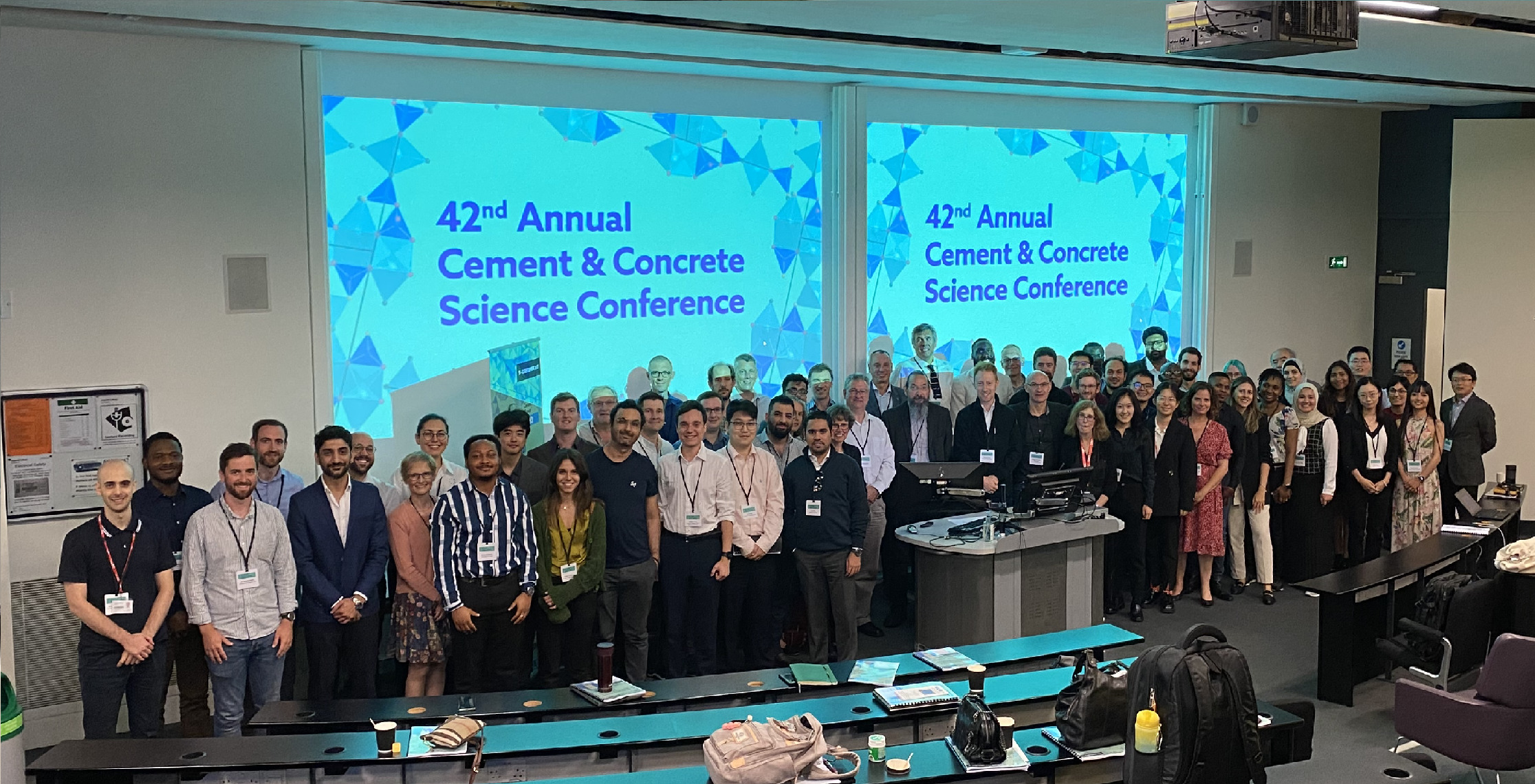A guest post from Senior Certification Engineer, Tamador Mokbel, whose PhD work was selected for a poster presentation at the Cement and Concrete Science Conference at Imperial College London earlier this week.
Tamador takes up the story:
I was so excited to have the opportunity to attend the 42nd Annual Cement & Concrete Science Conference as it helped to promote engagement between scientists and engineers from both industry and academia. Plus, it effectively supported the work of researchers especially the young ones in very friendly environment.

Background
The Conference provided a platform to present the latest research and innovation in cementitious materials either by an oral presentation or a poster presentation. In total there were 25 oral presentations and 34 poster presentations that covered varied topics such as:
- Microstructure, mineralogy, and properties of cementitious systems
- Hydration reactions and mechanisms
- Atomistic and mesoscale modelling of cementitious materials
- Interaction of cement with aggregates, steel, and other materials such as waste incorporations
- Chemical, mineralogical, and environmental aspects of durability
- Anhydrous cement materials
- Special cements
- Cement manufacture and low carbon technologies
- Nuclear waste immobilisation
What I learned
From attending the first day of the conference, I could note several exciting developments in the field of cement and concrete have taken place in the last few years. However, a big focus was on environmental sustainability and in particular on how to innovate methods to develop concrete with a lower carbon footprint than traditional content. To achieve this, some researchers have investigated the influence the possibility of replacing some cement content with mineral compounds like PCM-biochar, rice husk ash, fly ash, blast-furnace slag, natural pozzolana, etc without negatively affecting the concrete performance. Others have researched how utilising recycled aggregate can contribute to produce concrete with a lower carbon footprint.
Share This Story, Choose Your Platform!
Related News
A guest post from Senior Certification Engineer, Tamador Mokbel, whose PhD work was selected for a poster presentation at the Cement and Concrete Science Conference at Imperial College London earlier this week.
Tamador takes up the story:
I was so excited to have the opportunity to attend the 42nd Annual Cement & Concrete Science Conference as it helped to promote engagement between scientists and engineers from both industry and academia. Plus, it effectively supported the work of researchers especially the young ones in very friendly environment.

Background
The Conference provided a platform to present the latest research and innovation in cementitious materials either by an oral presentation or a poster presentation. In total there were 25 oral presentations and 34 poster presentations that covered varied topics such as:
- Microstructure, mineralogy, and properties of cementitious systems
- Hydration reactions and mechanisms
- Atomistic and mesoscale modelling of cementitious materials
- Interaction of cement with aggregates, steel, and other materials such as waste incorporations
- Chemical, mineralogical, and environmental aspects of durability
- Anhydrous cement materials
- Special cements
- Cement manufacture and low carbon technologies
- Nuclear waste immobilisation
What I learned
From attending the first day of the conference, I could note several exciting developments in the field of cement and concrete have taken place in the last few years. However, a big focus was on environmental sustainability and in particular on how to innovate methods to develop concrete with a lower carbon footprint than traditional content. To achieve this, some researchers have investigated the influence the possibility of replacing some cement content with mineral compounds like PCM-biochar, rice husk ash, fly ash, blast-furnace slag, natural pozzolana, etc without negatively affecting the concrete performance. Others have researched how utilising recycled aggregate can contribute to produce concrete with a lower carbon footprint.
Share This Story, Choose Your Platform!
Related News
Get in touch
Please complete the form below and we will contact you as soon as possible.
To help us to respond to your inquiry as quickly as possible, we have put a handy list of our services below.

